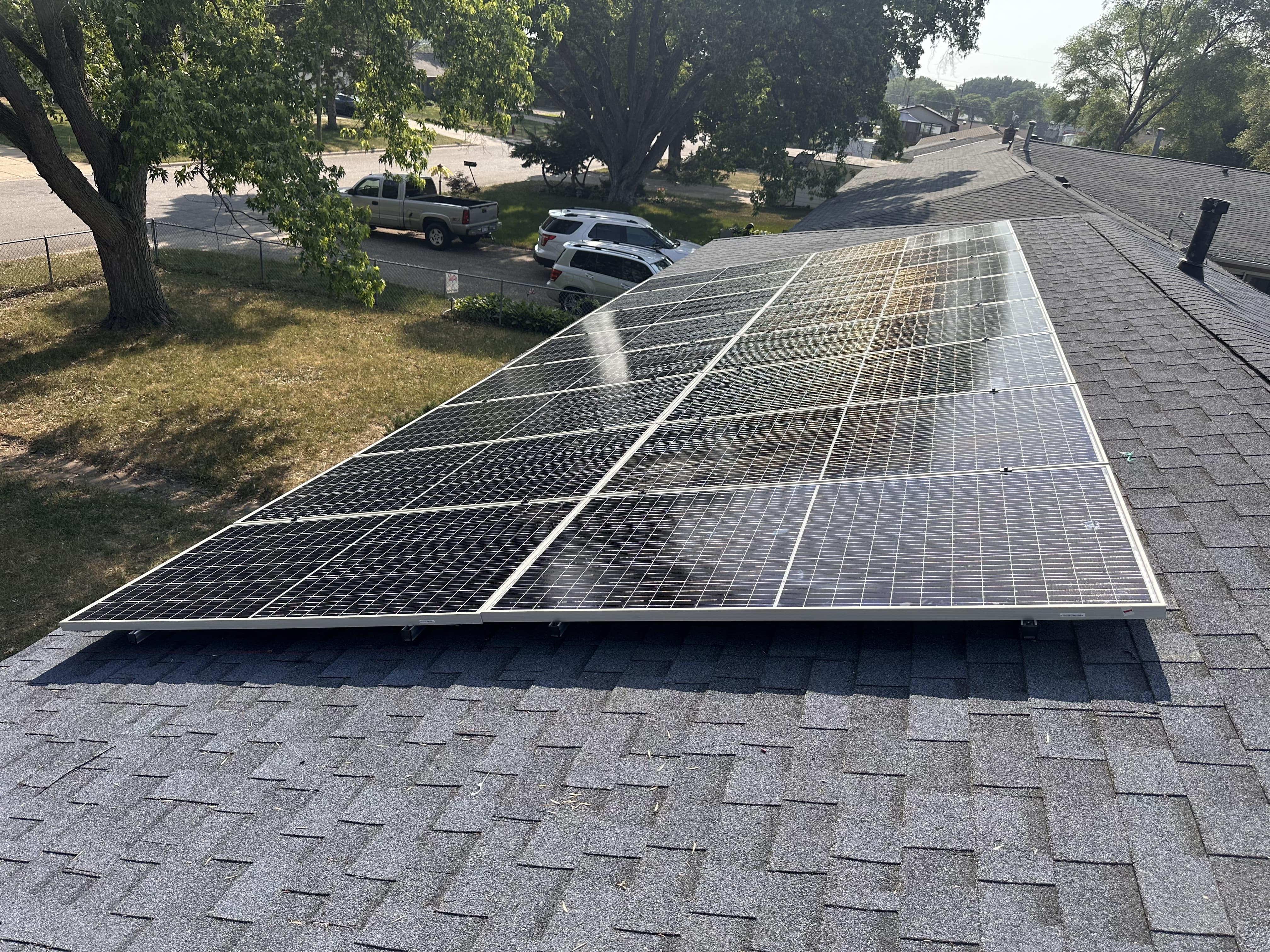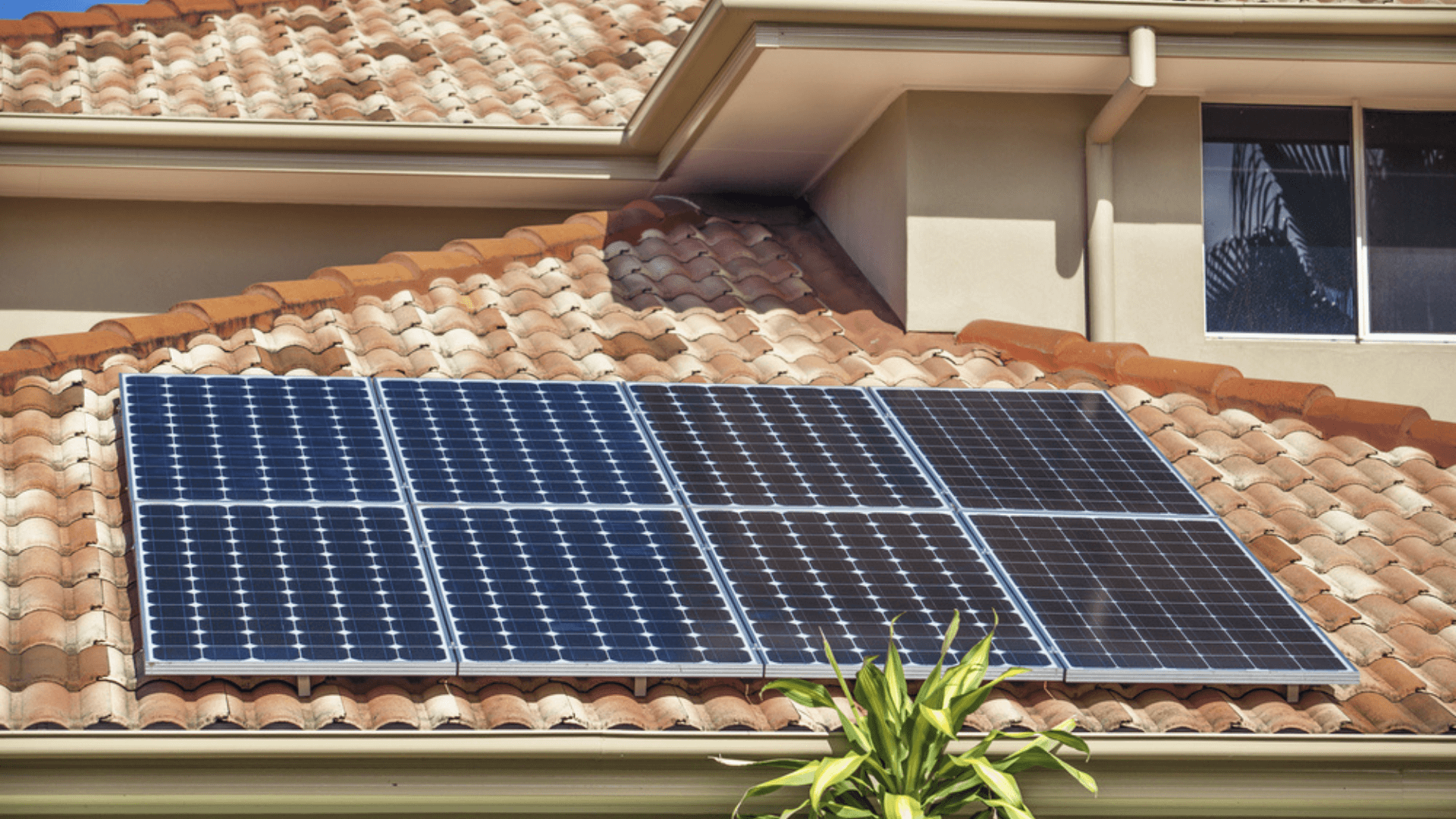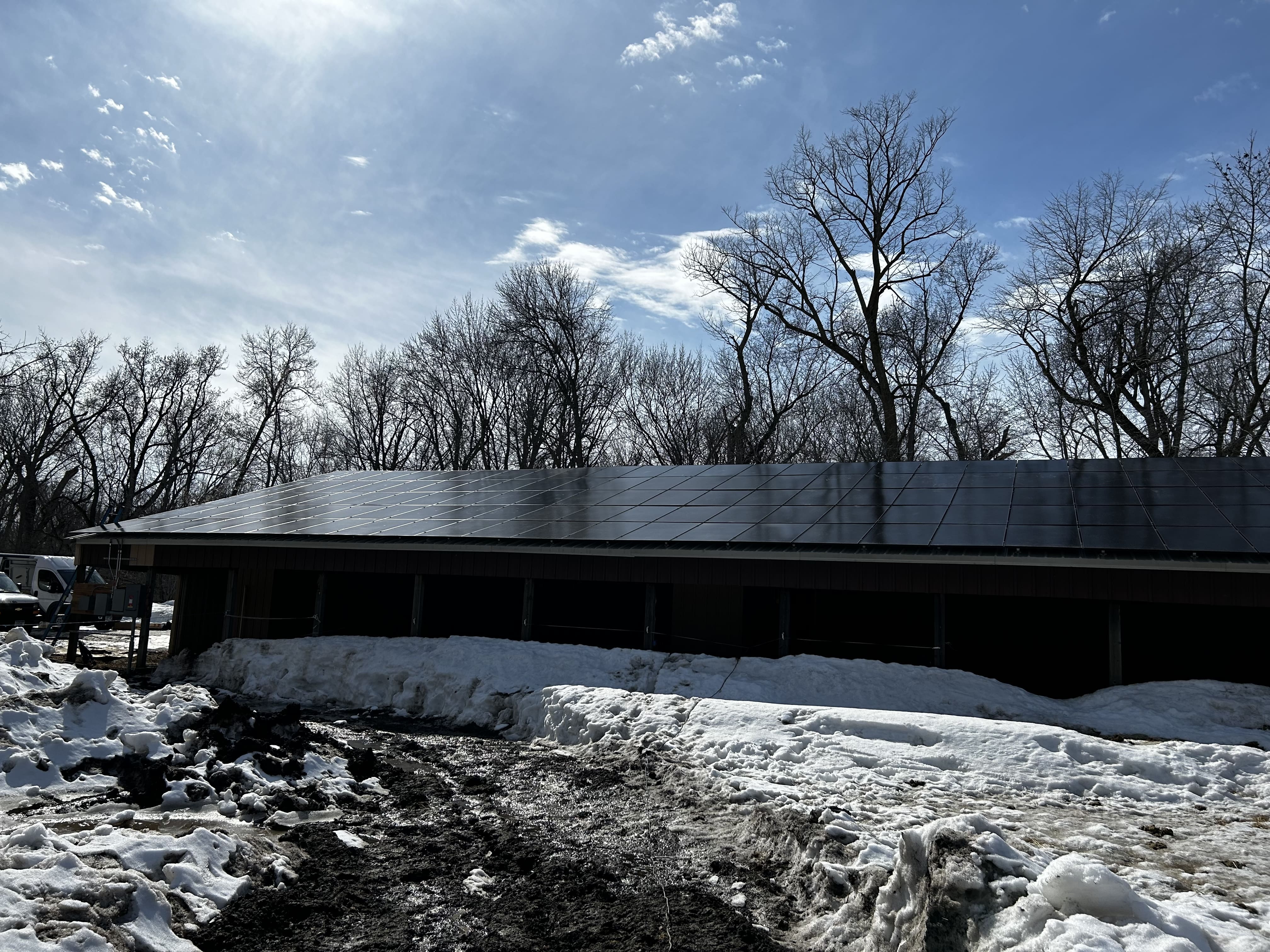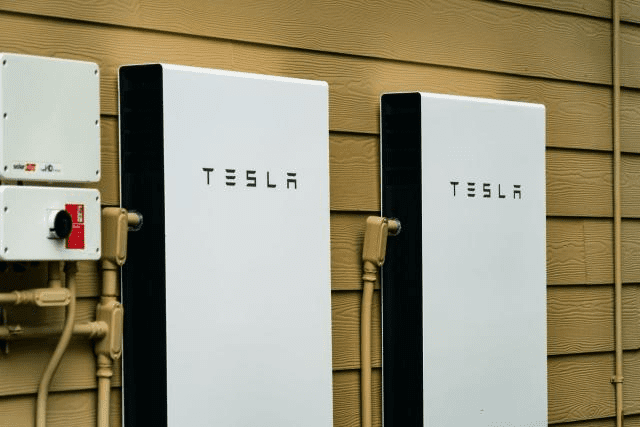Adding battery storage to your solar power system is a great way to ensure you can always access clean, renewable energy. It can also be a cost-effective solution for those who live in areas with inconsistent sunshine or other issues that could lead to lower production from the solar system alone.
To help you understand what adding solar battery storage involves and how it works, Wolf River Electric has prepared this guide detailing the process of adding a backup battery and all its considerations.
Reasons To Add A Battery To Your Solar Panel System

Energy Storage
Adding a battery to your solar panel system allows you to store excess energy generated during the day for use during times of low or no sunlight, such as at night or during power outages.
The battery is a reservoir, storing the surplus energy your solar panels produce. This stored energy can be used later, ensuring a more consistent and reliable power supply.
Increased Self-Consumption
With a battery, you can maximize the self-consumption of the solar energy you generate, reducing reliance on the grid and lowering your electricity bills.
Rather than returning all excess energy to the grid, you can store it in the battery and utilize it directly, reducing the power you need to purchase from the utility company.
Backup Power
In a power outage, a solar panel system with a battery can provide backup power to essential appliances and devices unless you have a storage-ready solar system.
The battery gives you a reliable backup power source during emergencies or grid failures, providing electricity for essential needs like lighting, refrigeration, and communication.
Time-of-Use Optimization
A battery enables you to take advantage of time-of-use electricity pricing, storing energy when rates are low and using it when rates are high, resulting in potential cost savings.
You can optimize your electricity consumption and reduce costs by charging the battery during off-peak hours when electricity rates are cheaper and using the stored energy during peak hours when rates are higher.
Grid Independence
Integrating a battery with your solar panel system reduces your dependence on the grid-tied solar system, increasing energy independence and resilience.
With a battery, you can rely more on the energy generated from your solar panels, reducing the need to draw electricity from the grid and making you less vulnerable to grid disruptions and price fluctuations.
Environmental Benefits
Incorporating a battery into your solar panel system enhances the environmental impact by promoting increased renewable energy consumption and reducing reliance on fossil fuels.
The ability to store and use solar energy when needed reduces the overall demand for electricity from non-renewable sources, contributing to a more sustainable and greener energy ecosystem.
Go Solar Today!
Considerations Before Adding Batteries To Your Solar System


Type of Inverter the Array Currently Uses
Determine if your solar panel system uses a compatible inverter for battery integration. Some inverters are specifically designed to work with batteries, while others may require additional equipment or modifications.
AC- or DC-Coupled System
Understanding whether your solar panel system is AC-coupled or DC-coupled is crucial because it affects the compatibility and configuration of the battery system.
AC-power systems use an additional inverter to convert DC power from the solar panels to AC energy for household consumption. In contrast, DC-coupled systems directly connect the panels to the battery.
Legal Requirements
Research and comply with any legal regulations, building codes, or permits necessary for adding batteries to your solar panel system, as these requirements can vary based on your location.
Certain jurisdictions may have specific regulations and safety standards that need to be followed when installing and connecting batteries to a solar panel system.
Battery Capacity Needs
Assess your energy consumption patterns and determine the appropriate battery capacity to meet your specific needs. Look into factors such as average daily energy usage, desired backup power duration, and any specific appliances or devices you want to power during outages.
Financial Savings from the Battery
Evaluate the potential cost savings or financial benefits associated with adding batteries to your solar panel system, considering factors like electricity rates, time-of-use pricing, demand charges, and any available incentives or programs.
Understanding the financial implications helps determine if the investment in batteries aligns with your goals and if the potential savings outweigh the upfront costs.
Federal Tax Credit for Energy Storage
Check if there are any federal tax credits or incentives available for energy storage systems, as this can significantly offset the cost of adding batteries to your solar panel system.
The federal government may provide tax credits or other incentives that promote the adoption of energy storage technologies, which can make adding batteries more financially attractive.
How To Add A Battery Backup To Existing Solar Panels


AC Coupling
AC coupled system involves connecting a battery inverter to an existing solar system. It is done by adding an AC-coupled device in the middle between the primary grid and the solar array. This device functions as an interface between the two systems, allowing you to export power from your batteries to the grid when needed without disrupting your solar production and vice versa.
DC Coupling
The DC batteries are connected directly to your solar array and main grid connection without using any additional devices. This allows you to export power from the battery bank to the main grid without losing solar production.
Replace Grid-Tie Inverter With Storage-Ready Inverter
With this method, your batteries will charge from the solar power produced during the day and then, when there is a power outage or if you need additional electricity at night, the storage-ready inverter will switch to grid mode and draw power from your battery bank.
How Solar Batteries Work
A Solar battery energy storage system capture and store the excess electricity solar panels generate. They typically use lithium-ion or lead-acid batteries to store the energy in chemical form. When solar systems produce more electricity than needed, the battery charges excess energy. Later, when energy demand exceeds solar generation, the battery discharges and supplies power to the home or facility.
Conclusion
A solar battery connected to your existing solar energy system will offer an immense benefit. Storing the energy generated by your solar system will decrease your reliance on traditional grid electricity.
Not only will you save money in the long term, but you’ll also be contributing to a more sustainable future for ourselves and our planet. Consider adding a battery to your solar system today and start reaping the rewards of free energy and environmental sustainability.
So don’t hesitate any longer – it’s time to add battery to your solar system and move towards a cleaner, greener future.
Join Our Solar Community
Get exclusive access to the latest solar news, tips, and promotions!



